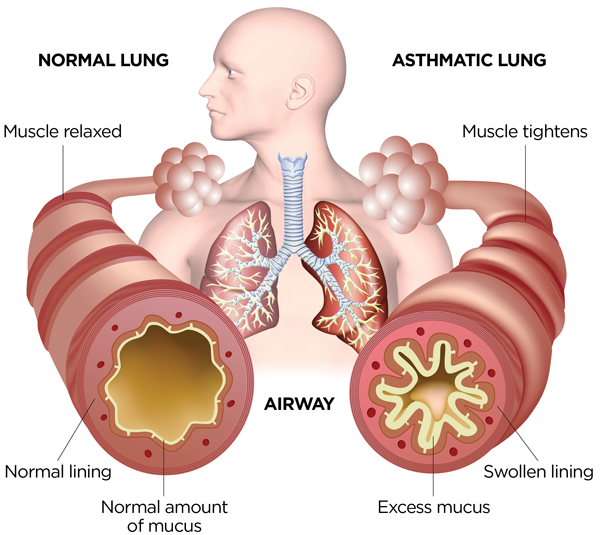Worldwide, millions of people suffer from chronic respiratory diseases known as asthma. As an employer or a colleague, it is important to have a basic understanding of asthma and the necessary steps to support individuals with asthma in the workplace. In this blog post, we will explore what asthma is, its common triggers, and How to manage people with Asthma at your workplace?
What is Asthma?

Inflammation and airway constriction are two features of the chronic lung illness asthma. This inflammation causes recurring episodes of wheezing, coughing, chest tightness, and shortness of breath. Asthma symptoms can vary in severity from mild to severe, and they can be triggered by various factors such as allergies, respiratory infections, exercise, stress, and exposure to irritants like smoke or strong odours.
To effectively manage asthma in the workplace, it is crucial to be aware of common triggers that can exacerbate symptoms.
Common asthma triggers include:
Allergens: These can include dust mites, pollen, mould spores, pet dander, and certain foods.
Irritants: Strong odours, chemicals, cleaning products, and tobacco smoke can act as irritants for individuals with asthma.
Respiratory Infections: Colds and flu, as well as viral or bacterial respiratory infections, can exacerbate asthma symptoms.
Physical Activity: Intense exercise or prolonged physical exertion can trigger asthma symptoms in some individuals.
Stress: Emotional stress or anxiety can contribute to asthma symptoms or exacerbate existing ones.
Tips for Managing Employees with Asthma at Your Workplace:
- Educate Yourself and Others: Take the time to educate yourself and your team about asthma, its symptoms, and common triggers. This knowledge will help foster understanding and empathy towards employees with asthma.
- Establish Open Communication: Encourage employees to openly discuss their asthma condition and any specific triggers they may have. Create a supportive environment where they feel comfortable sharing their concerns and needs.
- Accommodate the Work Environment: Conduct a workplace assessment to identify potential asthma triggers. Make necessary adjustments, such as improving ventilation systems, using air filters, implementing fragrance-free policies, and regular cleaning routines to reduce allergens and irritants.
- Provide Flexible Work Arrangements: Consider offering flexible work arrangements for employees with asthma. This could include remote work options, flexible hours, or the ability to work in a well-ventilated area. Flexibility can help individuals manage their symptoms effectively and minimize exposure to triggers.
- Designate Asthma-Friendly Areas: Create designated clean areas where employees with asthma can work comfortably. These areas should be free from potential triggers like dust or strong odours. Provide access to well-ventilated workspaces away from areas that may have higher concentrations of allergens or irritants.
- Support Medication and Treatment: Encourage employees with asthma to follow their prescribed treatment plans. Ensure they have access to their inhalers or necessary medications at all times. Allow for breaks to manage symptoms and attend medical appointments when needed.
- Emergency Preparedness: Develop an emergency plan in case of an asthma-related incident. Train designated employees on recognizing and responding promptly to asthma attacks. Keep emergency contact information readily available and ensure employees know the location of nearby medical facilities.
- Foster a Healthy Workplace: Promote workplace wellness programs that focus on overall health and well-being. Encourage physical activity, provide stress management resources, and create a smoke-free environment. A healthy workforce can help prevent asthma exacerbations and improve the overall health of employees.
Managing employees with asthma requires understanding, empathy, and proactive measures. By creating an inclusive and accommodating work environment, employers can support individuals with asthma in effectively managing their condition while maintaining productivity. It is essential to educate yourself and your team about asthma, identify triggers in the workplace, and make necessary adjustments. By fostering open communication, providing flexibility, and promoting a healthy workplace, you can create an environment where employees with asthma feel supported and empowered to thrive. Remember, each individual’s needs may vary, so personalized accommodations and ongoing dialogue are key to effectively managing asthma in the workplace.


